|
Monday, May 14, 2012
Progress Notes
A couple of weeks ago I accompanied my wife, Judy, to the annual School of the Osage reunion. She and her brother and four sisters (Don, Sue, Sharon, Shirley and Janie) all were graduates of the school. This year was the fiftieth year reunion of the 1962 class which was the one to which Shirley belonged. Judy and I met up with some of the ’62 class at the original School of the Osage building (photo 01).
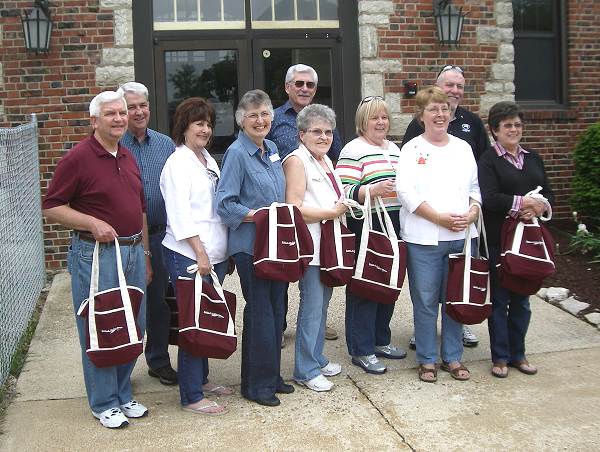
01 Osage Class - 1962
Here is the caption for the names of those present in the photo:
From left to right: Richard Miller, Ronald DeClue, Peggy Brandt, Shirley Steen Woolsey, Harold Strange, Peggy Kehr Jensen, Linda Herbert Munkers, Shirley Beard Crowley, Bill Newton, and Betty Stanton Bentz.
Of those named above I had known or had some knowledge of some of them through the years. Ron DeClue is our Miller County Historical Association accountant. I had known his father, Delmar DeClue. Bill Newton, whom I had known as “Billy,” was a student at my alma mater, Tuscumbia, for his first five years. Betty Stanton Bentz was well known to me through their cedar souvenir business. I didn’t know Shirley Beard Crowley but had written about her mother, Charlotte Beard, in a recent Progress Notes.
Assistant School Superintendent Tony Herman was kind enough to give us a complete tour of the original School of the Osage building located one mile south of Bagnell Dam near business Highway 54.
The original School of the Osage structure, built in 1934, is unique and classic; no other education facility in Miller County is quite as elaborately designed. Here is a color post card of the school shortly after it was constructed (photo 02).
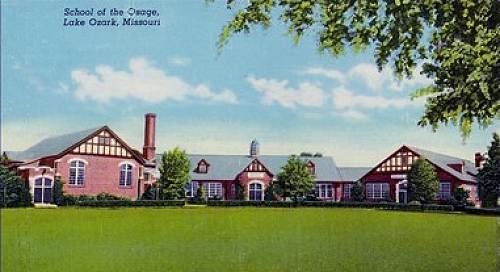
02 School of the Osage
And here are some photos I took (photos 03, 04 and 05):
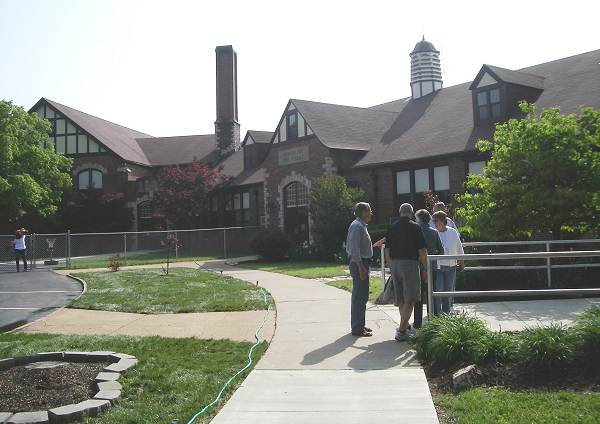
03 School of the Osage
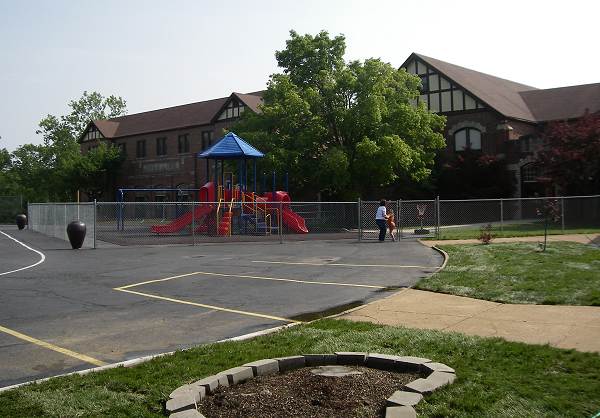
04 School of the Osage
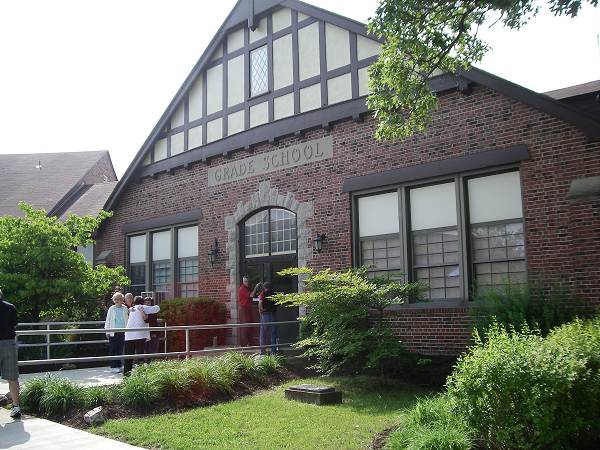
05 School of the Osage
One really needs a panoramic camera and a position farther back from the building to appreciate its size as well as its classic architecture. Here is a photo of the school taken in 1935 soon after it was built which displays the full length of the building (photo 06):
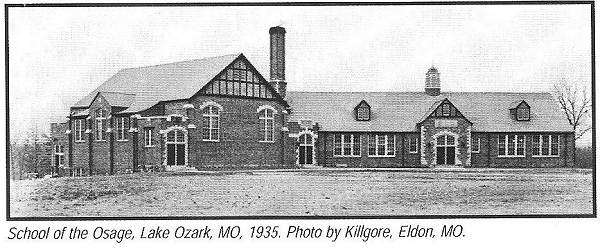
06 School of the Osage - 1935 - D. Weaver
A history of the school authored by Noel Glover covering its early years is on our website which I will copy here:
SCHOOL OF THE OSAGE
Consolidated District No. 1-1930-1963
Reorganized District No. II-1963-present
By Noel Glover
Before 1933 a number of schools from the outlying regions were consolidated into what is now the School of the Osage. In 1933 the high school moved to the new School of the Osage off Highway 54 near Bagnell Dam, and in 1939 the Bagnell grade school closed. In 1940, Bagnell's population was down to 188 and Franklin Township's had dropped to 1,555.
Some of the incorporated rural districts included Dogcreek, Elm Springs, Bagnell, and the Bowlin School, which was housed in a cobblestone building located just to the left of the road now leading to Osage's football field (photo 07).
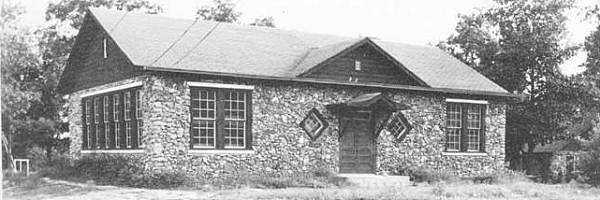
07 Two Room Grade School
This building was razed when the final additions were made to Osage's present building in 1952. The building used today was constructed in large part in 1933 and 1934 of stone and brick by the Epple Construction Company of Columbia, Missouri, and designed by Bonsock and Pearce, architects from St. Louis, Missouri. The school had beautiful grounds, shrubbery, and flowers, which are maintained to this day. By 1945 the library had grown to one of 3500 volumes, there was a fully equipped gymnasium, and two large playgrounds, all of which was quite unusual for a school of its size (photo 08).
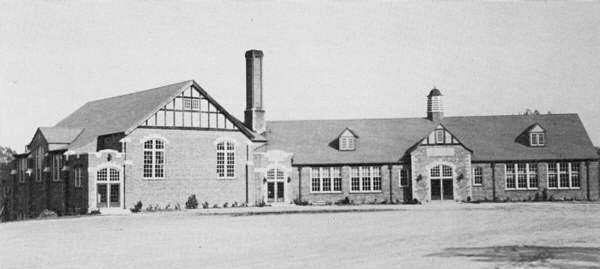
08 First new building for School of the Osage High School
The cafeteria was in a separate building (the old Bowlin School building) and it served a hot lunch for a nominal fee. Cooking was done on a very large commercial wood stove, and whenever food was needed for social functions in the school building, huge iron pots and kettles of hot food were carried by hand from one building to the other and back.
Most community social functions were held in the school building, in addition to the educational activities of the district. Such events as music festivals, speech contests, basketball tournaments, community dinners, and dancing instruction classes were common at the School of the Osage. Early in its history, within ten years of its construction, an active PTA was formed and began holding monthly meetings to promote better understanding between parents and teachers. The PTA also assisted in the publication of the first POW WOW, the school's yearly annual, in 1947. By this time the high school had a total enrollment of 144 students and a grade school enrollment of 151 students.
In the 1930's and 1940's no school in the Tri-County Conference had a football team, and basketball was the main sport for boys. Both girls and boys had a softball team, however, and there was a boys' track team as well. (At that time there was a track all the way around what is now Osage's grammar school building, as well as several tennis courts; the courts were used in winter by students and in summer by tourists.) In 1938, the elementary wing of the school was added...at that time, all the elementary schools began to come to Osage on busses instead of attending out in the country. The new gymnasium was built in 1952 and the first game was played in it that fall. At the same time, the addition which now contains the cafeteria, typing room, home economics rooms, was also completed (photo 09).
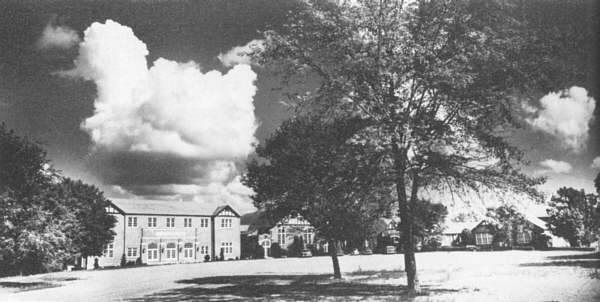
09 School of the Osage after 1938 and 1952 Additions
In 1969 the students and alumni founded the first scholarship to be established at School of the Osage, the Burl and Helen Henderson Scholarship. Over a year's work was done in contacting former students for donations, including some who were serving in Vietnam at the time. Each year the scholarship has been presented to a deserving student. This scholarship was named in honor of Burl Henderson, principal and athletic coach at Osage for 24 years, and his wife, Helen Henderson, an English teacher at Osage during that same time. Coach Henderson led the Osage Indians basketball team to 24 winnings seasons, and 5 state playoff berths! The following is an excerpt from an article describing the Eldon Tournament in 1946:
"Conway was our next opponent. They were all tall long-legged boys who were plenty good ball players. Osage had Conway at the half, and then Conway started in really playing and won by a margin of 15 points. By losing this game it put us in third place. We had to play Eldon. Eldon won by a 6 point margin, 52-47; that made two years in succession that Eldon won third place from Osage by a 6 point lead."
Journalistic styles may change some, but perhaps Osage's rivalry with Eldon never will! There was no booster's club yet, but fans were very loyal, and it was said that there would be nobody left to put out a fire in Lake Ozark if one had started during the playoffs!
In 1945 the First Annual Band Clinic was held at Eldon, with nine schools represented; 3 of the 105 students attending were from Osage. The program was an all day one and a representative from Streep Musical Company gave a talk on the selection of instruments. In 1947 a total of 80 students took part in the Osage Musical Festival and again in the Tri County Festival at California. There was a combined total of 22 #1 ratings given at the two festivals, of which Osage received 12.
The first graduation exercises were held in 1934 at School of the Osage. Twelve members of the senior class received their diplomas and took their place in history as Osage's first alumni (photo 10).
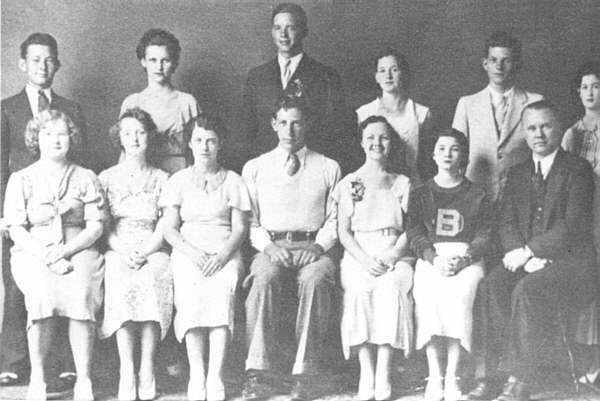
10 School of the Osage First Senior Class - 1934
A couple of days ago Osage graduate Ruth Clayton Phillips wrote me a note commenting about this week’s Progress Notes and especially photo 10 above. Here is the message she sent:
Joe,
So pleased to see the pictures of our beloved school. I started school there when I was 5 years old, in 1941. I was in that building until I graduated in 1954. The only time we were not in that building was when we went to lunch in the little building shown. I can't remember for sure when we stopped that.
I also appreciated the picture of the first graduating class because three of my favorite people in all the world are pictured there. My mother, Phyllis Robinson Clayton; my father Marion Clayton; and my aunt, Theora Robinson Pilkington were all in that graduating class. I have always considered it a point of honor to have been the first graduate of School of the Osage who came from parents graduating there. Thank you for the trip down memory lane. I wish my sister Cookie Clayton Thelen could have been there with her class.
Regarding your request that I identify the members of the first School of the Osage graduating class in photo 10 above, I don’t know all of them. However, here are those I recognize:
From left to right in the back row, I know that the first girl is Lois Dean (Caldwell) Ramsey, Garland Payne is next. I don't remember the next girl. My Dad, Marion Clayton and my Mother, Phyllis (Robinson) Clayton are the last two in that row.
In the front row I believe the first girl is a Boots, possibly Grace but not sure. The next three I don't remember. Brooksie (Bowlin) Behrens is next to my Aunt, Theora (Robinson) Pilkington. I believe the man is Mr. Hickman.
Sorry my memory is not good enough to remember them all. I am pretty sure there is a Lupardus fellow and I know that Alta (Cotten) Platter is one of the girls but not sure which one. Wish I could be more help. If I find more, I will let you know.”
A complete history of the School of the Osage, which includes the subsequent history of the school since the article written above by Noel Glover, recently was written by alumnus Donna Carrender. The book was so popular that at present no more copies are available. I was told by Donna’s husband, Gary Carrender, that possibly another printing might be undertaken at a later date.
One of the well known celebratory events associated with the School of the Osage is the Pun Ga Har Jo (photo 11).
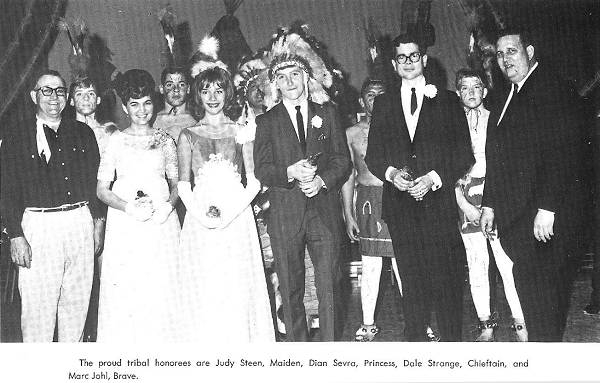
11 Pun Ga Har Jo - 1966
After the original school building referenced above was built in 1934, an elementary school was built nearby several years later (photo 12).

12 Preschool - Second Grade
More recently an upper elementary school, middle school, and high school were built on Highway 42 about a mile west of Business Highway 54 (photos 13, 14 and 15).

13 3rd through 5th Grade

14 Middle School

15 High School
More information about the early years of the School of the Osage can be found in the school’s first yearbook annual, which alumnus Donna Carrender located and copied. You can find it on this previous Progress Notes.
The early history of Miller County schools was published in the bicentennial edition of the Eldon Advertiser in 1976. I have copied that story here:
Miller County Once Had 82 School Districts; Today, 5
Eldon Advertiser Bicentennial Salute 1976
(Author not identified)
Tuesday morning, February 4, 1840…
“Now this day the County Court proceeds to lay out the County of Miller into School Districts and to number the same as follows, to wit:”
Thus the Miller County Court established 14 school districts in the counties, corresponding to congressional township districts or fractional districts. District 1 was in the northeast part of the county, Township 42, Range 14, and District 14 was in the southeast corner, Township 39, Range 12.
Much later the number of school districts in the county was to climb to 82, cutting down the walks of up to 15 miles or so some of the children had to make daily to attend school.
Note: Here is a list of the 82 school districts once located in Miller County (photo 16).

16 School Districts of Yesteryear
Click image for larger view
Today, with reorganization and fleets of school buses, the county has only five schools, with parts of two other districts within its boundaries.
Miller County had no schools at all probably until the middle of the 1830’s when settlers began taking an interest in seeing that their children learned the basics of reading, writing and arithmetic.
It is thought that the Reverend J.M. Houston was the first teacher in this county when he taught near Rocky Mount. Thus started the “subscription schools,” an educational system by which parents would “subscribe” for three or four children to study with a teacher for a few months (photo 17).
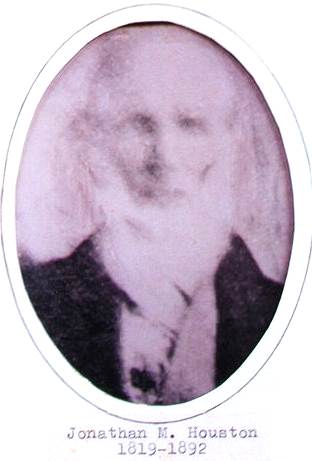
17 Jonathan Milton Houston
The County Court action of 1840 paved the way for the public schools as they are known today. These Congressional Township Districts in the county were increased to 17 in 1851 and were broken up into sub districts in 1856.
The schoolhouses were slower coming though. In 1856, although the county had 39 sub districts, it had only 11 public schoolhouses and 12 teachers…10 men and 2 women.
Clyde Lee Jenkins (photo 18), Miller County historian, in researching for his second volume of county history, came up with other figures and facts on education:
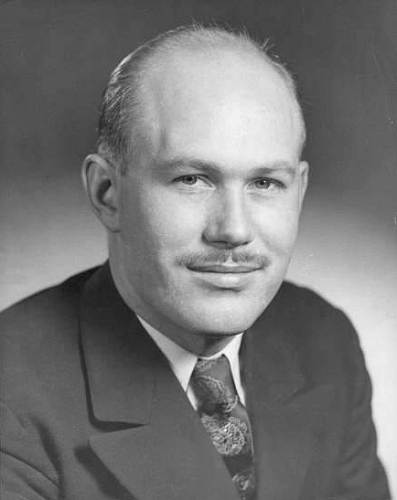
18 Clyde Lee Jenkins
“In 1863, Congressional Township School District No. 12, the one in which Brumley lay, was the largest district in attendance in the county.
By 1871, the number of sub districts had grown to 66, bringing schools closer to students, but only 456 students were in attendance that year, although the county had 2,458 young residents ages 5 to under 20 years.
Congressional township school districts were dissolved in 1872, but districts continued to keep these numbers until 1910.
In 1878 each school child attended an average of only 33 days of school each year and the average monthly salary of teachers in the county was $22.50.
By 1892, Miller County boasted 77 schoolhouses…three of them brick, 60 of them frame and 14 log.
Note: Here are the old log school houses at Capps and Pleasant Grove (photos 19 and 20):
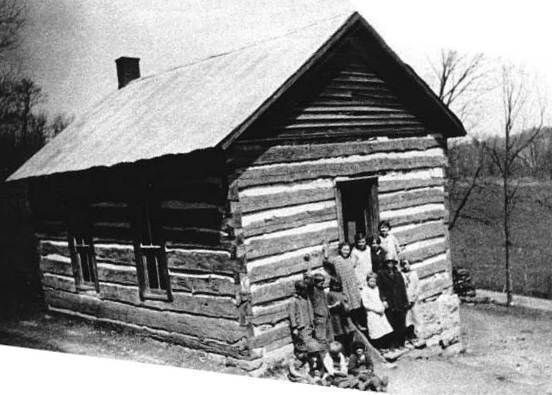
19 Original Capps School
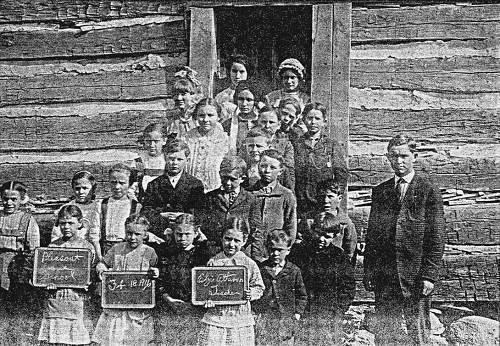
20 Pleasant Grove School
Among the records that had to be kept and reported were the number of whippings administered by the teachers. In Miller County these whippings totaled 671 for the year ending June 30, 1892.
Eighty four teachers were employed by that time with an average pay of $28.35 per month for men and $26.22 for women.”
In these early days the field of secondary education was left almost entirely to private academies described as “institutions of learning between the elementary school on one hand and college or university on the other.”
The Spring Garden Seminary, later the site for the Miller County Institute at Spring Garden, was established in 1866; the Aurora Springs Academy in 1884; the Eldon Academy, 1885 and the Iberia Academy in 1890 after a previous “high” school erected by a stock company of citizens closed (photos 21 - 24).
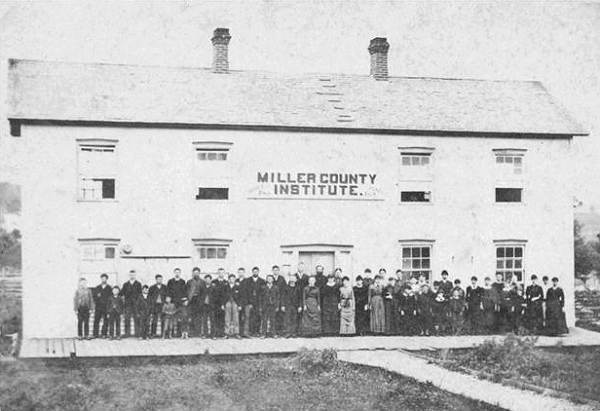
21 Miller County Institute Group Photo
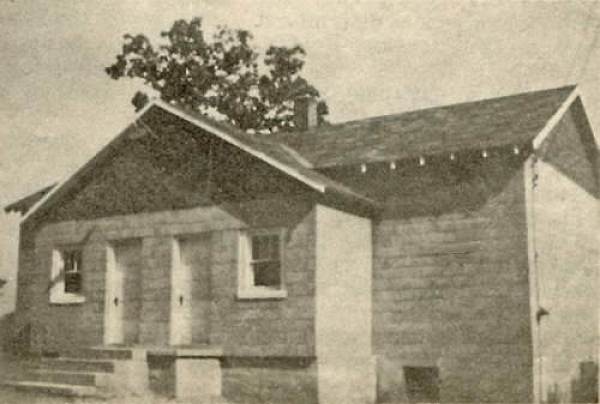
22 Aurora Springs School
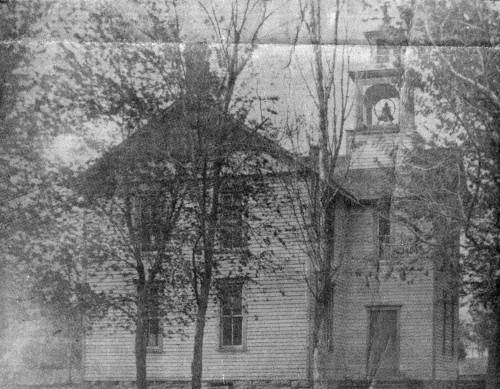
23 Early Eldon School on Soth Grand Ave.
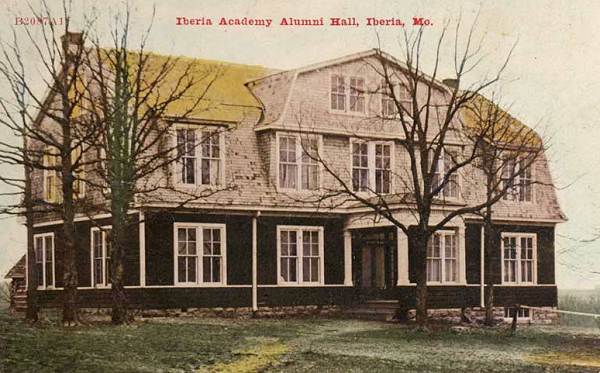
24 Iberia Academy Alumni Hall - 1906
Iberia also had another claim to fame in the educational field for Iberia Junior College was added to the Academy in 1926 and served as an intellectual center for a wide central Ozark area. For more than half a century the school was directed by Professor G.B. Smith (photo 25).
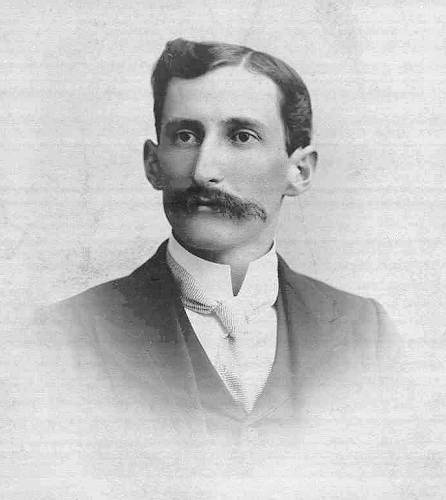
25 George Byron Smith - Iberia Academy
In 1895 there was a “first” connected with education, too. Cynthia Hawkins Spearman was elected county school commissioner which made her the first woman to hold public office in Miller County…and women didn’t even have the vote then. She served one term of two years (photo 26).
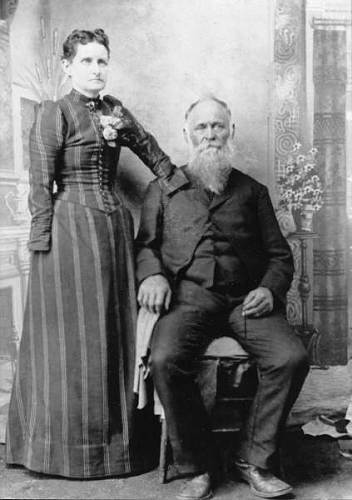
26 Cynthia Hawkins Spearman and husband Zebedee Spearman
In the late 19th century there was some temporary consolidation of rural districts for high school districts, but it was after the construction of Bagnell Dam when the Bagnell High School became the first to be organized under a consolidated plan. A consolidated district was formed by seven former rural districts and moved into a new building south of Bagnell Dam… the School of the Osage (photo 27).
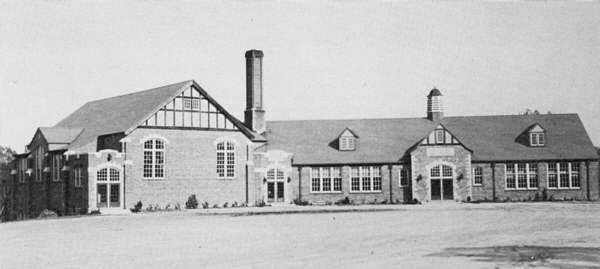
27 First new building for School of the Osage High School
With statewide reorganization, additional consolidation came to form today’s five districts with schools in the county: Eldon RI, Osage RII, Tuscumbia RIII, St. Elizabeth RIV and Iberia RV. Their physical plants today are a far cry from the one room log schools of early days.
The state wide reorganization and consolidation of our county schools in Miller County was greatly influenced and guided by then state representative, Carrol McCubbin (photo 28).

28 Carrol McCubbin in his Study - 2008
Carrol was one of our more active state representatives and his family has a deep Miller County heritage. You can read more about Carrol at this previous Progress Notes.
Tuscumbia native John Michael Smith, who now lives in Colorado, has been a frequent contributor to our website (photo 29).
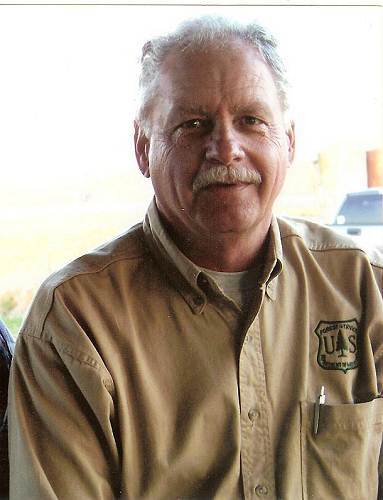
29 John Michael Smith
Recently, John sent me a short essay regarding his tour of duty on the huge carrier, the U.S.S. Ranger, during the Vietnam conflict.
This ship was one of the most well known U.S. carriers. A short history of the ship including many internet links can be found at Wikipedia:
The seventh USS Ranger (CV/CVA-61) is one of four Forrestal-class supercarriers built for the US Navy in the 1950s. Commissioned in 1957, she served extensively in the Pacific, especially the Vietnam War, for which she earned 13 battle stars. Near the end of her career she also served in the Indian Ocean and Persian Gulf. She was decommissioned in 1993, and is being stored at Bremerton, Washington. A foundation in Oregon is currently trying to acquire her as a museum, to be berthed on the Columbia River at Fairview, Oregon.
Ranger had the distinction of being the first US carrier built from the very beginning as an angled deck ship. She appeared on television in The Six Million Dollar Man, Baa Baa Black Sheep and in the films Top Gun, Star Trek IV, The Final Countdown, and Flight of the Intruder.
Copied below is John Michael’s story (photo 31):

31 John Michael Smith - 1967
My role on the aircraft carrier, the Ranger, was as an ordnance man. I and a crew of several others were responsible for assuring that all conventional weapons (bombs, rockets, missiles, etc.) were loaded and properly armed before an aircraft was launched. My “office” then was the flight deck of the carrier. There is absolutely no other place in the world to compare with duty on a flight deck. Working in and around all the various aircraft, getting them fueled and armed and getting them in position to fly off the deck into the air was an amazing accomplishment. It was not without its hazards. Men were blown overboard and died for being in the wrong place at the wrong time. The planes went down occasionally even though you had done everything correctly. But you went on, did your job and thanked the Lord you saw another day of business as usual.
At that time we were in the Gulf of Tonkin. Our mission was to fly aircraft on missions targeting North Vietnamese units as well as support for all our own ground troops in the country which were supporting South Vietnamese efforts.
When we were deployed and fully staffed, there were approximately 4200 seamen on board. We had four to five “Air Groups” which included all the personnel needed to maintain each of the several different types of aircraft designed for various purposes. I was assigned to G Division. The Air Groups came and went after each deployment but those assigned duty on the ship remained whether we were in the United States or in a war zone.
The Ranger has been decommissioned but will not be scrapped. She will be used as a museum and training facility. Her new berth will be near Tacoma, Washington. I would like to have the opportunity to walk her flight deck one more time. A lot of men called her home for how ever many years they chose to serve aboard her.
I am proud that I was a part of her history and I do not regret the time I served our country as a crew member of one of the greatest ships of the greatest navy the world has ever known.
In 2002 there was a group of us of G Division Crew Members who met at Lake of the Ozarks for a reunion. Most of us had not spoken with one another since the war or even knew how many of us were still alive. This in itself at first was somewhat anxiety evoking; however, once we figured out who was who it was as if we had never been separated over those nearly forty years.
I was the one who did the preparation and planning for the event (it took a year) from my home in Colorado. I did have some help from your cousin, Jim Pryor, who lived in Tuscumbia near where we were meeting (of course, I was born and raised in Tuscumbia). Jim helped me choose a hotel and make the necessary arrangements for the reunion. My Aunt Mildred Messersmith Gray suggested I contact the Autogram and Advertiser which I did. Vernon Publishing Company reporter Ginny Duffield came to the event and interviewed each one of us taking photos and writing a very nice story for the Advertiser and Autogram.
My brother Don Smith came to be with us and he and I visited the museum. That was the first and only time I have seen it. It was also the last time I had the opportunity to speak with Danny Slone who tragically was killed in an automobile accident not long afterward.
John Michael sent me a photo of the Ranger published in the Autogram July 23, 1966 in which the caption refers to his serving on the ship (photo 32).
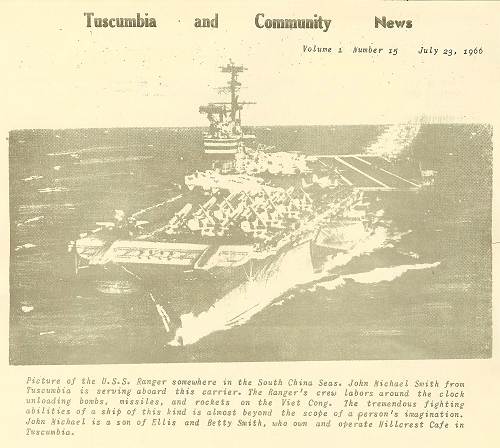
32 Ranger in Local Paper
Click image for larger view
Thanks John Michael for sending us your memories of military service in the U.S. Navy during the Vietnam conflict.
Recently, Betty Kallenbach received a new State of Missouri flag sent us by state representative Rodney Schad. Pictured here are several photos of Harold Flaugher and Brice Kallenbach raising the flag (photos 33 - 36):
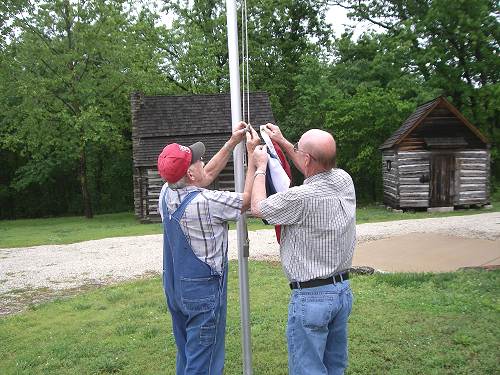
33 Missouri Flag
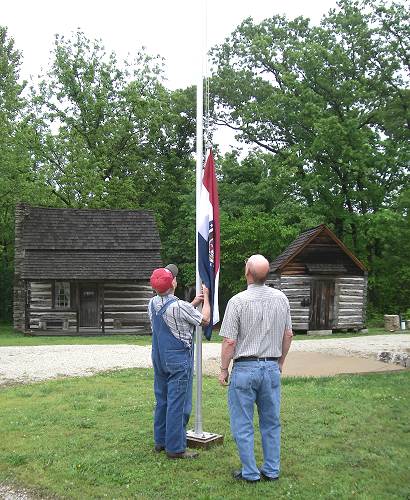
34 Missouri Flag
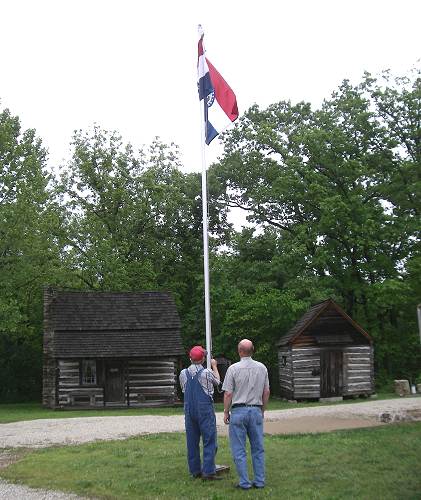
35 Missouri Flag
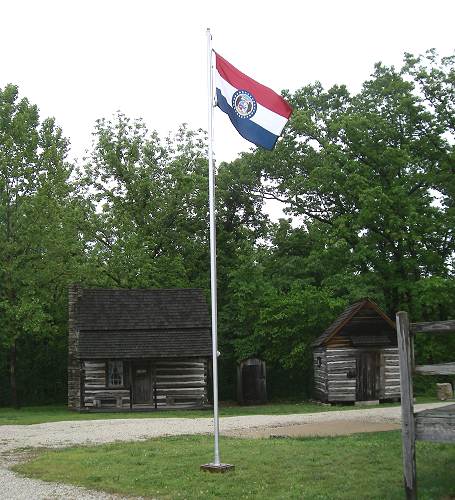
36 Missouri Flag
We now have four flag poles standing in front of the museum; three in the Jason Ash memorial site and the Missouri state flag positioned close to the museum (photo 37).
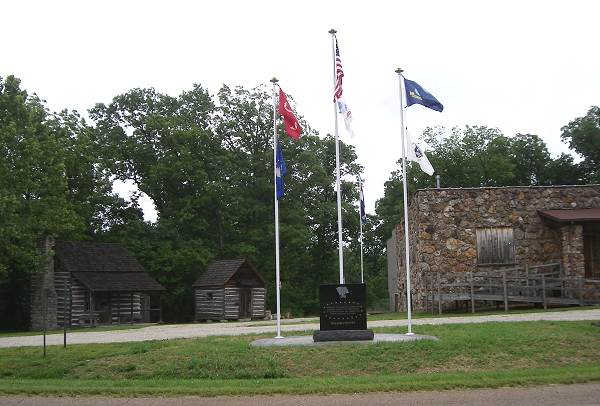
37 All Four Flags
A dedication of the Jason Ash Memorial will be held this coming Saturday mornng, May 19, at ten a.m. including an honor guard ceremony. All are invited to come and participate in this historic event.
Last May 1 Judy and I hosted a Miller County Museum display at the 9th Annual Conservation Fair sponsored by the Miller County Soil & Water Conservation District. Tom Graves was one of the many who visited our table (photo 38).
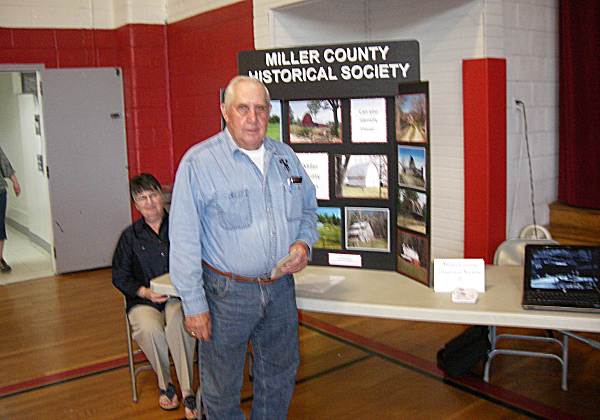
38 Tom Graves (Standing) and Judy Pryor (Sitting)
My wife, Judy, is the one sitting to the left in the photo. The display board featured a collection of old barn pictures taken by Doris Wiggins. Here is a close-up of the display board put together by Doris Wiggins and Diane Berkbigler (photo 39):
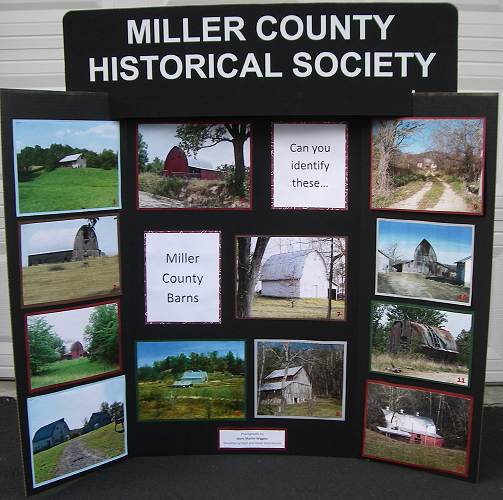
39 Barn Display Board
Click image for larger view
The number identification of each barn is printed in very small numbers in the lower right hand corner of each photo.
Note: You will need to click on the photo above to get a larger view and you may have to click on it again to magnify the photo to adequately see the numbers.
You can use the number to find the location of the barn in this list of the locations where they were photographed (photo 40).
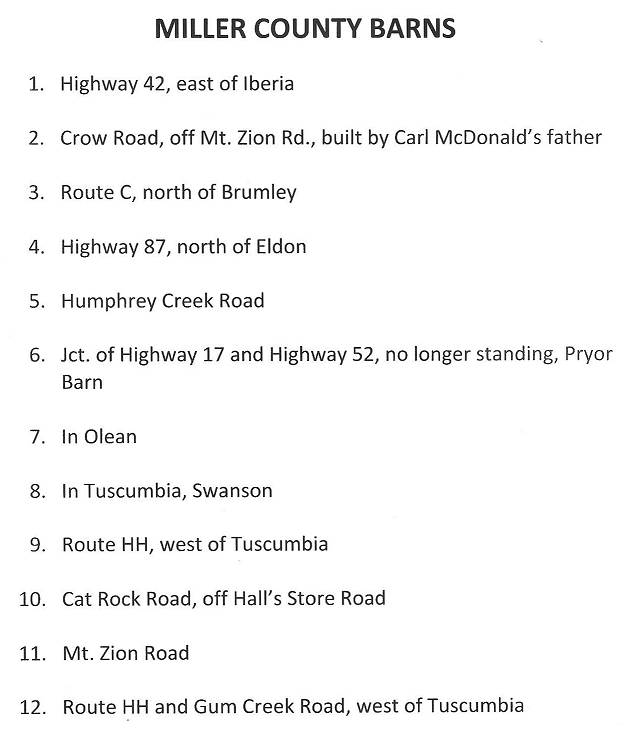
40 Locations of Barns
Many visitors were interested in the barn photos and since some were not identified regarding location we sought help from those who stopped by. These old barns are falling by the wayside now that the large round bales of hay now used by most farmers don’t need to be sheltered.
That’s all for this week.
 Joe Pryor
Previous article links are in a dropdown menu at the top of all of the pages.
|

